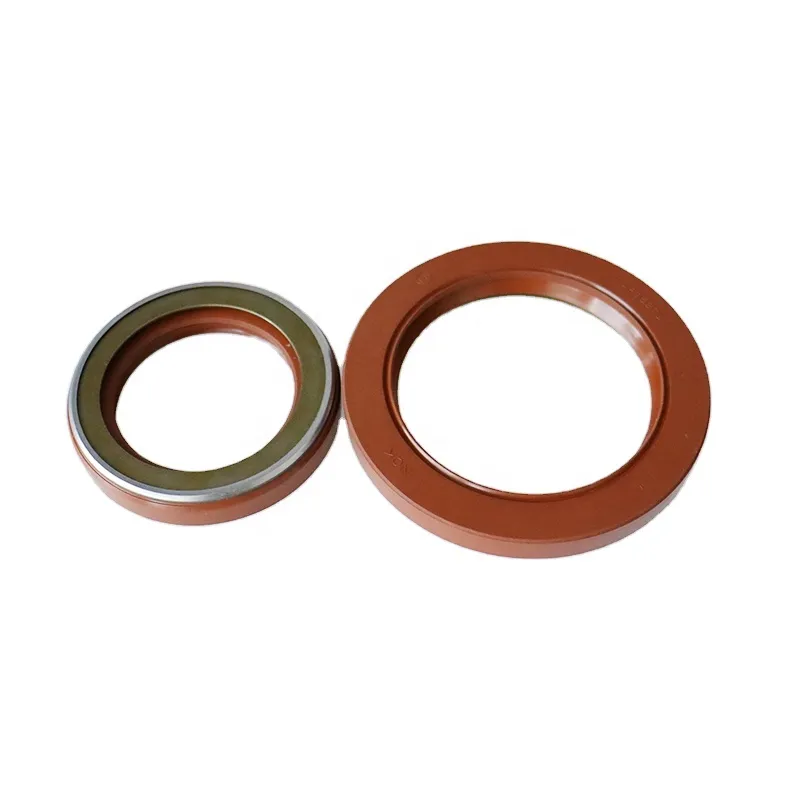dec . 10, 2024 06:07 Back to list
Hydraulic Cylinder Seal Maintenance and Repair Techniques for Optimal Performance and Longevity
Understanding Hydraulic Cylinder Seal Repair A Comprehensive Guide
Hydraulic systems are fundamental in numerous industries, ranging from construction machinery to agricultural equipment. At the heart of these systems lies the hydraulic cylinder, which is responsible for converting hydraulic energy into mechanical force. However, like any mechanical component, hydraulic cylinders can experience wear and tear over time, leading to seal failures. When this occurs, understanding how to effectively repair the seals is essential for maintaining equipment performance and efficiency.
Common Causes of Seal Failure
Before delving into repair techniques, it’s crucial to identify the common causes of seal failure in hydraulic cylinders. Seal failure can often be attributed to
1. Wear and Tear Over time, seals can deteriorate due to continuous exposure to hydraulic fluid, heat, and pressure. This natural wear leads to loss of sealing capability. 2. Contamination Dirt, debris, and other contaminants can infiltrate the hydraulic system, causing damage to the seals. These impurities can scratch and wear down the sealing surfaces.
3. Incorrect Installation Improper installation of seals can lead to early failure. If seals are not seated correctly, they may become pinched or damaged during operation.
4. Pressure Surges Sudden changes in pressure can create excessive forces on the seals, leading to deformation or failure.
5. Chemical Degradation Certain hydraulic fluids may not be compatible with specific seal materials, causing them to break down over time.
The Importance of Timely Repairs
Timely repair of hydraulic cylinder seals is critical for several reasons. Firstly, leaking hydraulic cylinders can lead to loss of efficiency and power, ultimately increasing operational costs. Moreover, fluid leaks can pose safety hazards in the workplace and can result in environmental pollution. Addressing seal issues promptly helps maintain system integrity, enhances performance, and extends the life of hydraulic components.
Steps for Hydraulic Cylinder Seal Repair
hydraulic cylinder seal repair

When it comes to repairing hydraulic cylinder seals, following a systematic approach is essential. Here’s a step-by-step guide
1. Identify the Issue Before beginning any repair work, it’s vital to assess the hydraulic cylinder and determine whether the seals are indeed the problem. Look for signs of leakage, unresponsive cylinders, or fluctuations in performance.
2. Gather Necessary Tools and Materials Collect all required tools, including wrenches, seal pullers, and replacement seals. Ensure you have the correct seal type that matches the specific hydraulic application.
3. Disassemble the Cylinder Carefully remove the hydraulic cylinder from its assembly. Take note of how components are arranged, as this will help during reassembly. Use caution to prevent damaging any parts.
4. Remove Old Seals Using a seal puller, remove the worn-out seals from the cylinder. Inspect the groove for any debris or damage that might affect the new seal's performance.
5. Clean the Cylinder Thoroughly clean the cylinder using suitable cleaning agents to remove contaminants. Ensure that no debris remains that could cause future seal failures.
6. Install New Seals Gently place the new seals into their respective grooves. Use a seal installation tool to ensure the seals are installed evenly without pinching or damaging them.
7. Reassemble the Cylinder Once the new seals are in place, reassemble the hydraulic cylinder following the original sequence of parts.
8. Test for Leaks After reassembly, conduct a thorough test to check for any leaks. Monitor the hydraulic performance to ensure the repair was successful.
Conclusion
Hydraulic cylinder seal repair is an essential aspect of maintaining efficient hydraulic systems across various industries. Understanding the common causes of seal failure, recognizing the importance of timely repairs, and following a systematic repair process can significantly mitigate downtime and enhance equipment lifespan. With proper maintenance and timely repairs, hydraulic systems can operate smoothly, ensuring productivity and safety in the workplace.
-
Understanding Oil Seals and Their Role in Machinery Efficiency
NewsApr.08,2025
-
The Importance of Seals in Agricultural and Hydraulic Systems
NewsApr.08,2025
-
Essential Guide to Seal Kits for Efficient Machinery Maintenance
NewsApr.08,2025
-
Choosing the Right TCV Oil Seal for Your Machinery
NewsApr.08,2025
-
Choosing the Right Hydraulic Oil Seals for Reliable Performance
NewsApr.08,2025
-
A Comprehensive Guide to Oil Seals and Their Applications
NewsApr.08,2025
-
The Importance of High-Quality Oil Seals in Industrial Applications
NewsMar.26,2025
Products categories
















